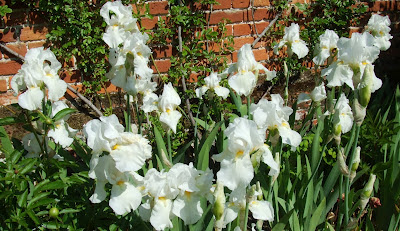We are slumberous poppies,
Lords of Lethe downs ...
Lords of Lethe downs ...
 |
| Poppies for remembrance |
The poppy is the flower of sleep and oblivion. According to Greek legend it was created by the god of sleep, Somnus, to soothe Ceres, the corn goddess, to sleep. When she had rested the corn grew again, giving rise to the belief that poppies are essential for the welfare of the corn.
Poppy seeds can lie dormant for years and are often stimulated to germinate once the soil is disturbed. Hence the subsequent blooming of poppies on the battlefields of Flanders and why they became the symbol of remembrance for those killed in war.
The
poppies in the garden, they all wear frocks of silk,
Some
are purple, some are pink, and others white as milk,
Light,
light, for dancing in, for dancing when the breeze
Plays
a little two-step for the blossoms and
the bees.
Fine,
fine for dancing in, all frilly at the hem,
Oh,
when I watch the poppies dance I long to dance like them!
The
poppies in the garden have let their silk frocks fall
All
about the garden paths, but where are they at all?
Here
a frill and there a flounce – a rag of silky red,
But not
a poppy-girl is left – I think they’ve gone to bed.
Gone
to bed and gone to sleep; and weary they must be
For
each has left her box of dreams upon the stem for me.
Ffrida Wolfe







